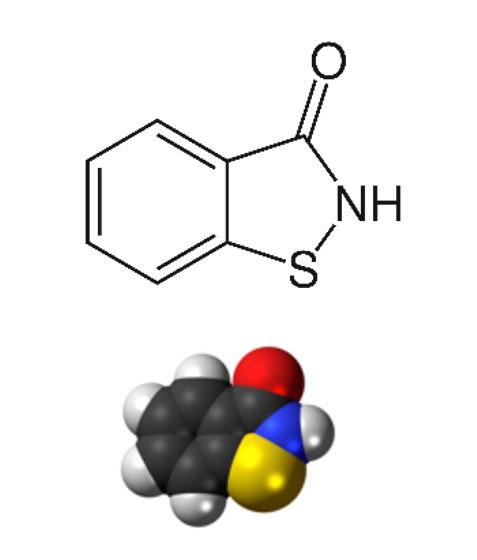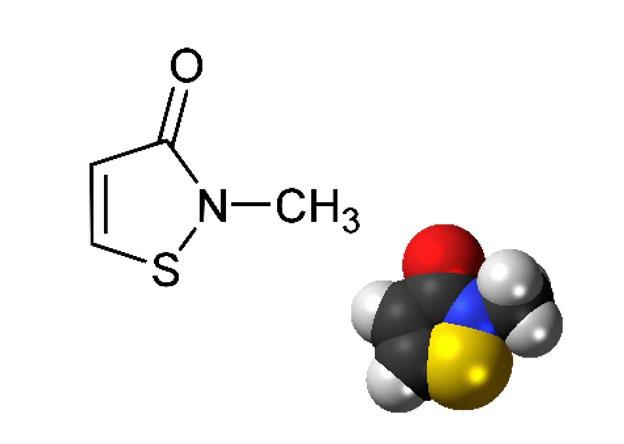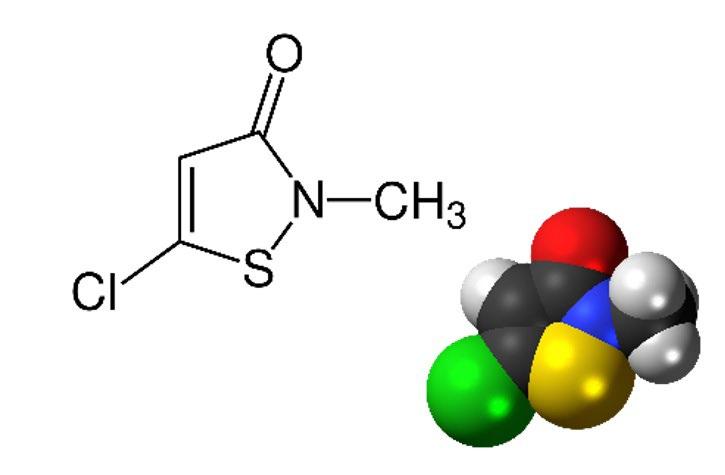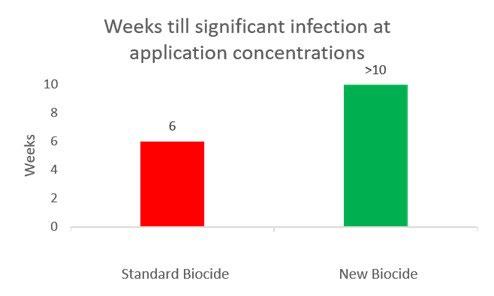
5 minute read
edited by: U. Schmidt-Freytag, A. Kelly ............................................................................................... pag
The new biocide regulation - their impact and innovative sustainable solutions for casting lubricants
edited by: U. Schmidt-Freytag, A. Kelly
Due to new biocide regulations, since May 2020 the commonly used chloromethylisothiazolinone / methylisothiazolinone (CIT / MIT) mixtures have been subject to stricter labeling. By introducing a new generation of biocides, Henkel has improved the biostability of its release agents and lubricants for the die casting industry. In addition to an optimised antimicrobial effectiveness, the new biocide also meets the new criteria thus avoiding stricter labeling.
KEYWORDS: BIOCIDE, CASTING, LUBRICANTS, SUSTAINABILITY, REGULATION;
INTRODUCTION: THE NEW BIOCIDE REGULATION In order to better control the environmental compatibility, especially in the area of wastewater management, changes have recently been made to the classification of biocidal compounds. With the 13th "Adaptation to Technical Progress" (ATP) according to the "Classification, Labeling and Packaging" (CLP) Regulation (EU Regulation No. 2018/1480), effective since May 1, 2020, the chemical substance mixture CIT / MIT [CAS 55965-84-9] (CS 2513 + CS 36854) is subject to a change in the multiplication factor (M-factor change) from 10 to 100. The latter depends on the acute toxic effect on aquatic organisms. For Europe, this means that for all products that contain at least 0.025 percent of these substances, the labeling will be changed to H410 / H411 (toxic to aquatic organisms with long-lasting effects) (Tab. 1). Furthermore, they must be marked with GHS 09 (pictograms dead fish, dead tree). For Germany further regulations mean that formulations with these biocide types are reclassified to the highest water hazard class – class 3. As a result, much stricter guidelines apply to the handling and storage of such substances. In the case of release agents and lubricants for die casting foundries, numerous preservation systems are affected by these changes in the law. The new ordinance and the associated environmental, health and safety controls pose major challenges for many customers of Henkel AG & Co KGaA leading them to seek sustainable alternatives. Ulrike Schmidt-Freytag, Andrew Kelly
Henkel AG & Co KGaA, Germany
BIOZIDE-TYPE
CIT / MIT-mixtures
Henkel Biozide “N-version” LABELLING 2019 LABELLING FROM MAY 2020
ISOTHIAZOLINONES – DESCRIPTION Isothiazolinones are heterocyclic compounds (Fig. 1) that play an important role as biocides. Five derivatives are used to a significant extent: − Methylisothiazolinone (MIT, MI) − Chloromethylisothiazolinone (CMIT, CMI) − Benzisothiazolinone (BIT) − Octylisothiazolinone (OIT, OI) − Dichloroctylisothiazolinone (DCOIT, DCOI)
Isothiazolinones are usually used as preservatives against microorganisms (bacteria, fungi) in water-based systems such as dispersions, emulsions and solutions. With their bactericidal and fungicidal effect, they protect shower products, shampoos, cosmetics, cleaning agents, paints and adhesives from microbial decomposition and are the standard solution in the areas of die casting and aqueous metal forming products. Further areas of application are slime control in paper production, rot protection of cooling and process water, the antimicrobial treatment of textiles and use as a wood preservative. The CMIT / MIT and MIT / BIT mixtures are most frequently used in products for die casting. In addition to the desired effect, killing or controlling the growth of microorganisms, isothiazolinones also have undesirable effects. They have a high aquatic toxicity, and some derivatives (especially CMIT) can cause skin sensitization in humans through direct contact or via the air.
a) b) c)


Fig.1 - Chemical structur of a) Methylisothiazolinone (MIT), b) Chlormethylisothiazolinone (CMIT), c) Benzoisothiazolinone (BIT).
HENKEL’S SUSTAINABLE APPROACH In order to support the sustainability goals of our customers, new conservation systems have been evaluated and implemented, subject to stringent product requirements. On the one hand, they have to be robust enough to prevent bacterial growth during storage, central dilution and application of the product, while at the same time maintaining product stability. Many modern biocides, while offering excellent protection, cannot meet these requirements because their ionic nature is incompatible with
most emulsion systems. An ideal biocide for emulsion application is typically non-ionic while providing sufficient biocidal activity. As a result of extensive research and development, Henkel was able to successfully identify and approve new active ingredients. The formulations meet the strict new environmental criteria and accordingly avoid the stricter labelling. As has been confirmed by laboratory tests and industrial applications, the new type of biocide has no negative influence on the form, function and stability of the release agent and lubricant foundry products. It is already used in industry for series production and has proven to be even more effective in terms of biostability compared to the old CIT / MIT technology. With the standard biocide, the critical number of bacteria is already reached after 6 weeks of stress test. The formulation with the new biocide, on the other hand, remains below the critical value even after 10 weeks (Fig. 2), which indicates better biostability. The critical value is where the number of bacteria in the stress test reaches at least 106. Experience has shown that with such a high bacteria count number there is a risk of biofilm formation in practical use. Another advantage of the newly introduced biocide is the improved biostability when using hard water (Fig. 3). The general rule for the biostability of Isothiazolinones is that it decreases when the products are used in lime-containing water and that the time it takes for the critical number of bacteria to form noticeably increases in the stress test with demineralized water. If you now compare the standard biocides with the new products, you can clearly see that they are less sensitive to water hardness and therefore represent a better alternative here too.

Fig.2 - Comparison of bacterial growth between a product containing a standard biocide and the new biocide (diluation ratio 1:80).

CONCLUSION The regulation for the classification of several biocides has recently been adjusted. In the case of auxiliary products for the die-casting industry, many industry-standard preservation systems are affected by these legislative changes. Across Europe, the reclassification of chronic M-factors has resulted in products having to be labeled with the “dead fish / dead tree” label. In addition, legislation in Germany has resulted in many products and raw materials being assigned a higher water hazard class. The stricter environmental, health and safety controls pose great challenges for many customers. With the introduction of the new generation of biocides, we can not only avoid stricter labeling of our foundry products, but also significantly improve their antimicrobial effectiveness and achieve increased biostability even in hard water.








